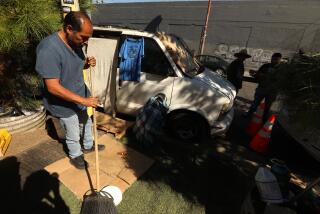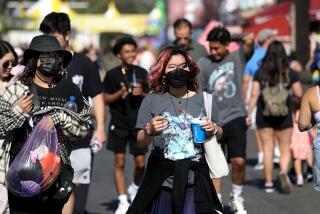Column: What Oxnard can teach L.A. and the rest of California about COVID-19
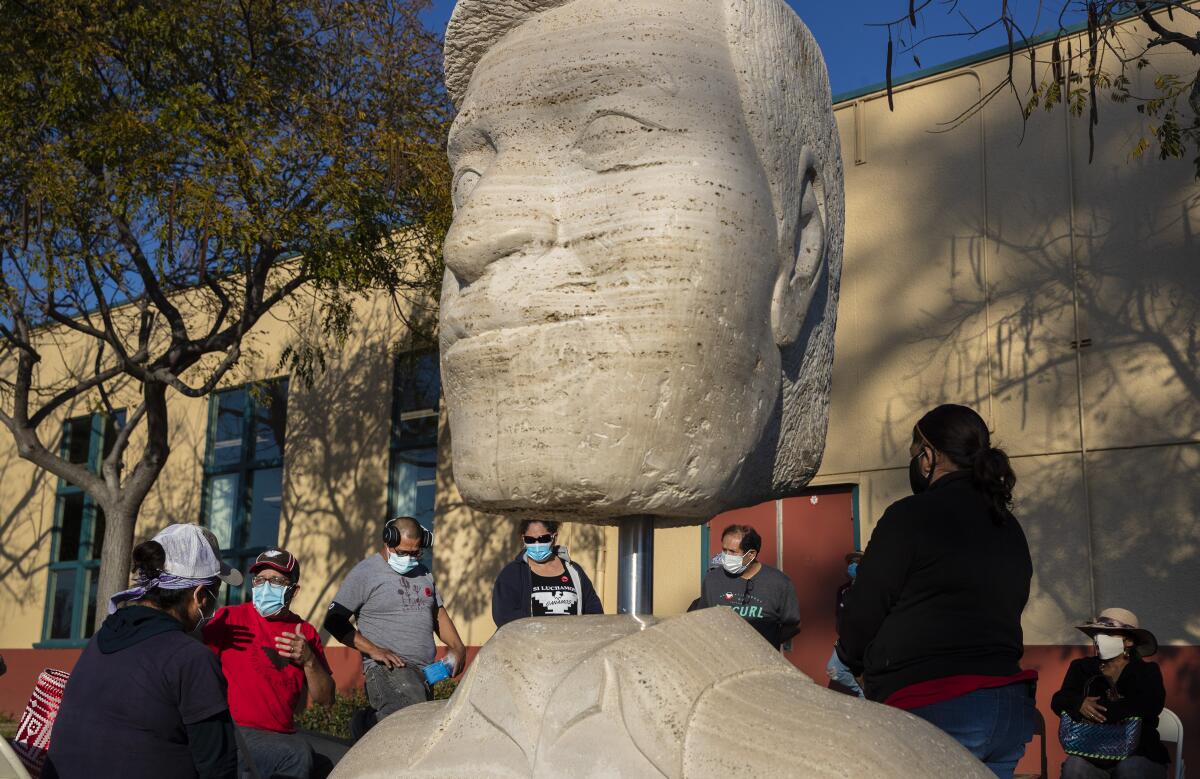
If you want a case study on how to address the pitfalls, pandejos and promise in California’s fight against the coronavirus, get on the 101 North after morning rush hour and head to Oxnard.
This working-class, super-majority Latino city remains the brown-skinned stepchild of a county where the split between wealthy suburbs and agricultural towns is straight outta the 1950s. So it’s little surprise the coronavirus has disproportionately ravaged Oxnard: The city represents about a quarter of Ventura County’s population but 40% of its coronavirus cases and nearly 37% of its COVID-19 deaths.
Oxnard is the type of place where the coronavirus stalks the poor and powerful alike. Carmen Ramirez, a former City Council member who now represents Oxnard as a county supervisor, had a brother die of COVID-19 earlier this month. Ventura County Public Health Director Rigoberto Vargas, who grew up in south Oxnard, told me his wife lost an aunt because too many relatives continued to party over the winter holidays despite stay-at-home mandates.
“It’s not something that’s fixed overnight with a CARES Act, or government,” said Ramirez, a civil rights lawyer by trade. “I’m surprised coronavirus hasn’t impacted us more.”
“I struggle with seeing this pandemic strike our community the way that it has,” said Vargas, the son of farmworkers. “It’s at the forefront of our intentions and priorities as a county and community. But this virus has its own ways.”
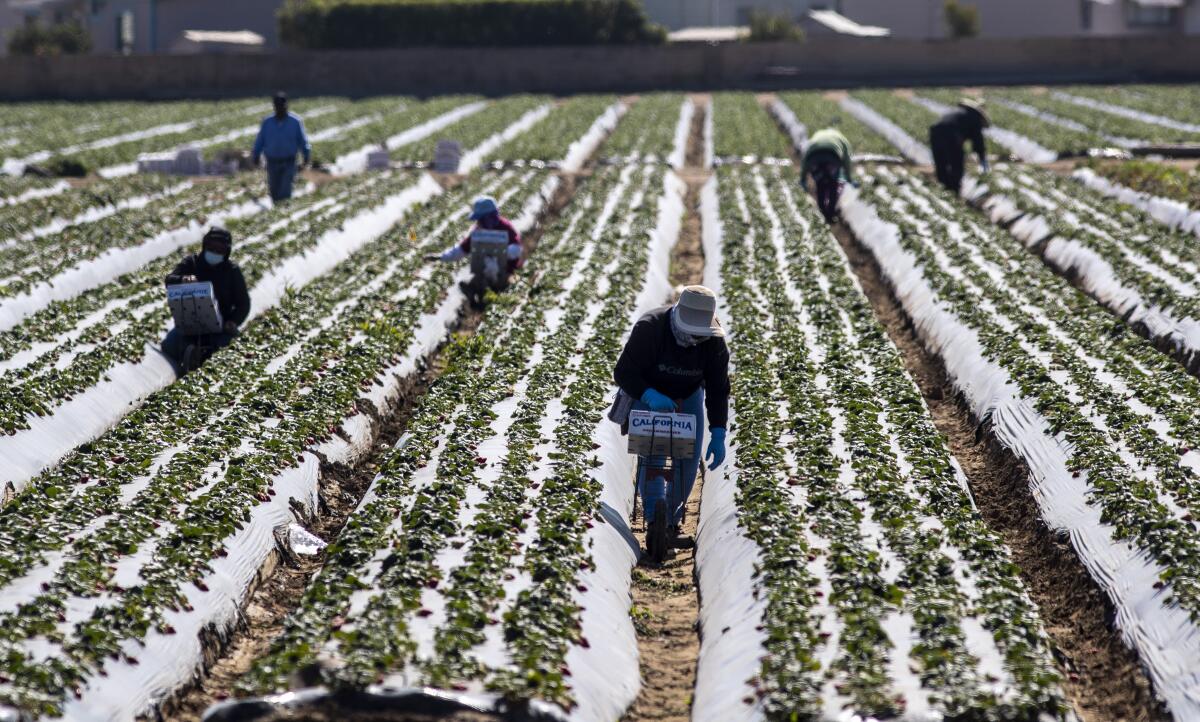
The situation is so dire that Ramirez said the county looked into banning businesses from renting out chairs and bounce houses (the move went nowhere because cities could simply ignore any mandate). But Oxnard also offers a counter-narrative that we don’t hear enough of when it comes to the media’s depiction of Latinos and coronavirus: resilience. Agency. And folks more than willing to call out their own community.
One of the things that struck me the day I visited Oxnard was how blunt everyone was about the situation. They realize that the fight before them is both structural and personal — and everyone has to go into battle together, or die apart.
“If we don’t take care of the least of our brethren, as Jesus said,” Ramirez said, “not only is it immoral and wrong, it’s going to come back and bite us.”
Outside a recreation center at Southwinds Park, a long line of women waited for free food. I came at the invitation of Henry Villanueva, a retired Ventura County behavioral health worker. Frustrated in July at what he felt was an indifferent response by city and county officials to the coronavirus, he urged community groups with different missions — neighborhood councils, healthcare volunteers, concerned mothers and the like — to form a coalition and raise desmadre with the county.
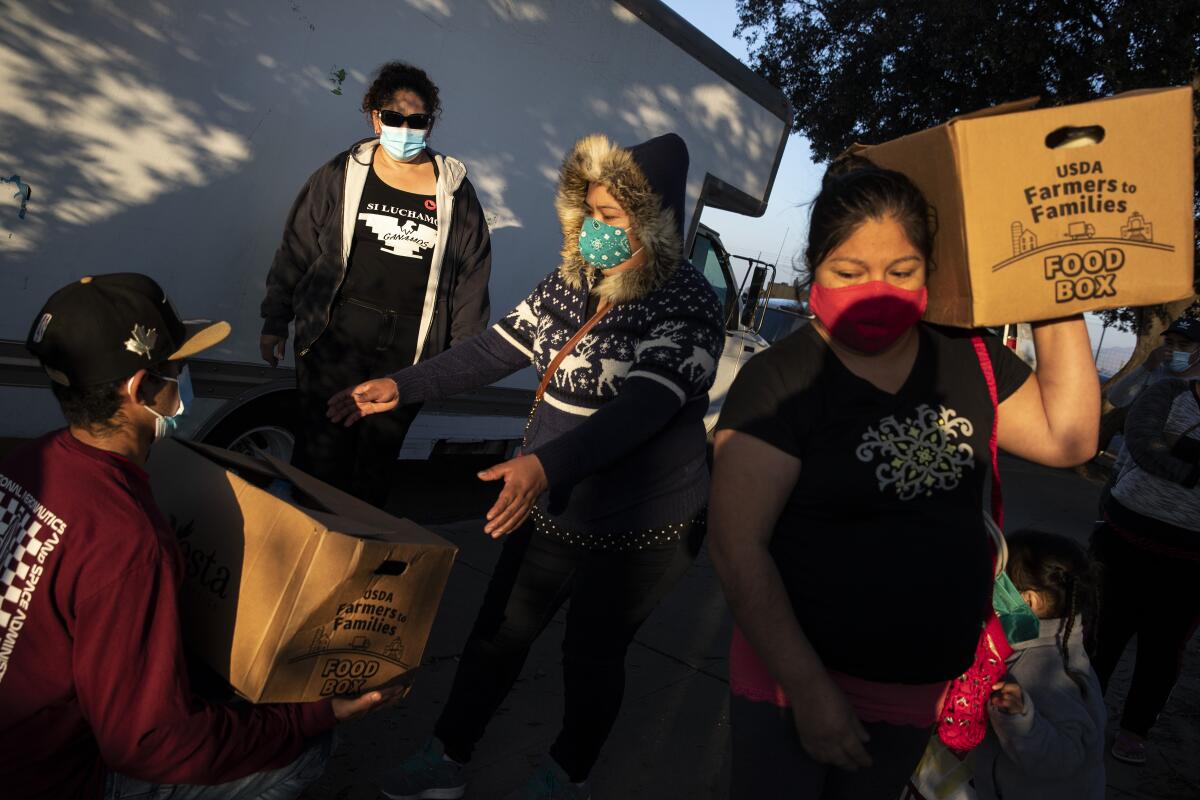
“Very early on, it was apparent it was going to hit us,” said Kelly Christiansen, Southwinds Neighborhood Council co-chair. “And we were going to not get helped. So we had to help ourselves.”
“We are really badly neglected,” added her co-chair, Carolina Gallardo-Magaña, as she handed out bags of groceries.
For months, their coalition pushed for more pop-up testing clinics in the 93033 and 93030 ZIP Codes, which comprise 29% of Ventura County’s coronavirus cases. They frequently blasted Vargas during his biweekly virtual town halls, which he didn’t mind.
“They have the right intentions and the heart of the community,” Vargas said. “It’s a little direct, but it’s OK. My responsibility is to hear them firsthand.”
The push is finally paying off — county-run vaccine centers have been opened in those ZIP Codes, and neighborhood schools and churches are now hosting pop-up testing sites. But Villanueva is still angry the move didn’t happen earlier.
“It’s like fighting a forest fire,” he said. “You don’t start at the edges. You go to the hot spot.”

Next, I met members of Padres Juntos. For the last decade, the volunteer-run group has helped migrant parents navigate their new homeland. Now, said co-coordinator Jessica Vargas (no relation to Rigoberto), their job is even more urgent.
“Everyone is psychologically scarred,” she said. “There’s no work, and now they’re entrusted to be teachers to their children, and they barely know the technology to do so.”
Padres Juntos pressed Oxnard’s school districts to set up free Wi-Fi hotspots, and started WhatsApp group threads to pass on information. “It’s easier to talk padre a padre in our language instead of the academic words doctors or government people use,” Vargas said. “They trust us.”
And they use that goodwill to call out the pandejos among them. (That’s “pandemic idiots,” for the uninitiated.)
“It’s just negligence,” Eloida Cabrera said. “We tell everyone, ‘You take care of you, you take care of me.’ But look around. Look how Oxnard is hurting. We need to be at the vanguard of this.”
My tour ended at Cesar Chavez Elementary School, in Oxnard’s historic La Colonia barrio. Outside a building that the legendary labor leader worked out of decades before, a United Farm Workers organizer held a small meeting to hear strawberry pickers fret about their work and home conditions.
“You’re between the sword and the wall,” Jose Guadalupe said. “You get sick, but then what? You don’t work. If you’re undocumented, who’s going to help you?”
Carmen Obeso, who’s currently injured, started a program called Campesino a Campesino to gather essential products like hand sanitizer and toilet paper for farmworkers. She gets donations from as far away as Pomona.
“In the early days of coronavirus, we couldn’t buy them because stores would run out by the time we got off work,” Obeso said. “Now, a lot of people just can’t afford them.”
The plight of farmworkers is one that county officials and activists have focused on together. In September, the Board of Supervisors approved $1,500 grants paid out from the county’s general fund and private donations to field hands who had lost work. Vargas, the health director, said the county would begin to inoculate workers at farms so they wouldn’t have to take time off.
But the coming strawberry harvest means an influx of pickers from across California will move in. Even as coronavirus infection rates and hospitalizations across California start to significantly decline, that’s a cause for concern if people drop their guard.
“If they can’t make people understand to take care, we’re screwed,” said Marcos Valencia, a former UFW organizer. “We’re telling them, ‘Please understand, the numbers have exploded.’ But I don’t know how to make them understand. What good is it if my sons don’t go to school but my neighbors party next door?”
UFW Foundation relief coordinator Maribel Cano overheard the conversation. During food drives, she and Villanueva display a whiteboard comparing coronavirus numbers in Oxnard’s most-affected ZIP Codes and the entire city of Camarillo, the wealthier neighbor to the east. In one photo she showed me from the summer, Camarillo’s overall count at that point was 375 while for 93033 it was 1,744, even though Camarillo has more people.
“People were shocked,” Cano told everyone. “That’s when people finally said, ‘OK, we get it now.’ You just have to be as honest as possible with gente.”
More to Read
Start your day right
Sign up for Essential California for news, features and recommendations from the L.A. Times and beyond in your inbox six days a week.
You may occasionally receive promotional content from the Los Angeles Times.
